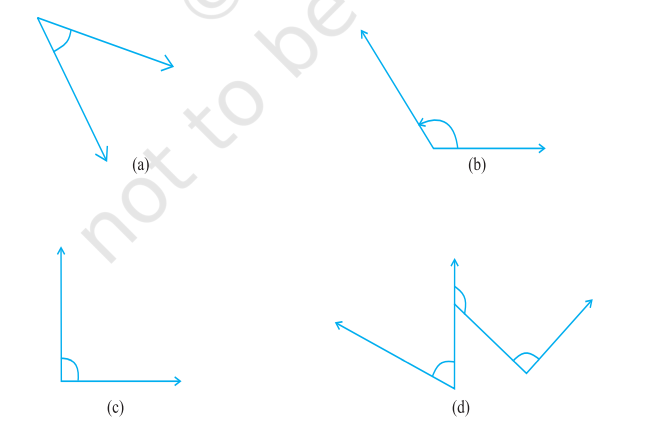Write down the measures of
(a) some acute angles.
(b) some obtuse angles (give at least two examples of each)
An acute angle is one that measures between 0 and 90 degrees and is less than 90 degrees.
An obtuse angle is one that is larger than 90 degrees but less than 180 degrees.
An acute angle is one that is smaller than 90 degrees. As a result, 45°, 50°, 55°, 60°, and 65° are all acute angles.
An obtuse angle is one that is more than 90 degrees. As a result, 120°, 125°, 135°, and 140° are all obtuse angles.
Topper's Solved these Questions
- UNDERSTANDING ELEMENTARY SHAPESBOOK - NCERTCHAPTER - UNDERSTANDING ELEMENTARY SHAPESEXERCISE - EXERCISE 5.9
2 Videos
- UNDERSTANDING ELEMENTARY SHAPESBOOK - NCERTCHAPTER - UNDERSTANDING ELEMENTARY SHAPESEXERCISE - EXERCISE 5.1
7 Videos
- UNDERSTANDING ELEMENTARY SHAPESBOOK - NCERTCHAPTER - UNDERSTANDING ELEMENTARY SHAPESEXERCISE - EXERCISE 5.6
4 Videos
- SYMMETRYBOOK - NCERTCHAPTER - SYMMETRYEXERCISE - EXERCISE 13.2
6 Videos
- WHOLE NUMBERSBOOK - NCERTCHAPTER - WHOLE NUMBERSEXERCISE - SOLVED EXAMPLES
7 Videos
Similar Questions
Write down the measures of
(a) some acute angles.
(b) some obtuse angles (give at least two examples of each)
View SolutionWrite down the measures of
some obtuse angles.
(give at least two examples of each).
View SolutionWrite down the measures of
some acute angles.
(give at least two examples of each).
View Solution.write down the measures:(a) some acute angles (b) some obtuse angles.4. Measure the angles given below using the Protractor and write down the measure

View SolutionGive two measures of (i) acute angle (ii) obtuse angle.
View SolutionThe measure of an acute angle <90∘.
View SolutionThe measure of an obtuse angle <90∘.
View SolutionWrite the sum of the angles of an obtuse triangle.
View SolutionAn angle of measure 1400 is (a)an acute angle (b) an obtuse angle (c)a straight angle (d) a complete angle
View SolutionSay True or False : (a) The measure of an acute angle <90∘. (b) The measure of an obtuse angle <90∘ (c) The measure of a reflex angle <1806∘ (d) The measure of one complete revolution =360∘. (e) If m?
View Solution
